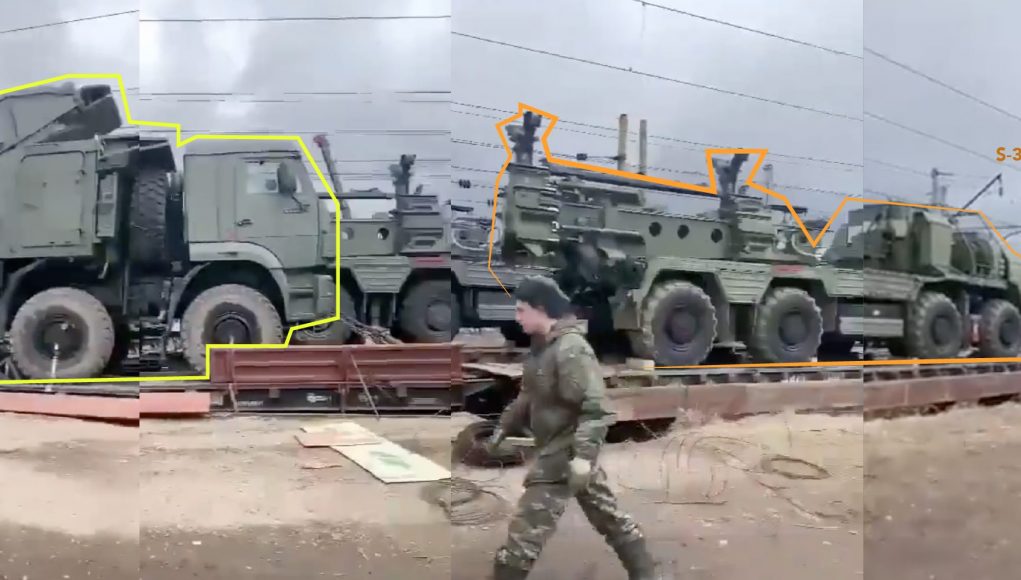Cea mai serioasa ingrijorare a momentului din perspectiva securitatii si apararii este o noua ofensiva militara de amploare a Rusiei in Ucraina. Mai multe luari de pozitie oficiale au avut loc atat din partea NATO si UE, cat si din partea administratiei americane. Presedintele SUA si liderii Pentagonului au lansat o serie de consultari si convorbiri telefonice in Ucraina si Rusia, pentru a transmite ingrijorarea dar si reactia ferma in fata oricarei agresiuni.
Intrucat Moscova dezminte ceea ce este absolut evident, si anume deplasarea de trupe si echipamente militare spre Estul Ucrainei, acolo unde intretine un razboi cu 13.000 morti si ocupa ilegal o parte a unui stat independent, iata ca apar si dovezile.
Sub pretextul organizarii unor exercitii militare, Rusia transfera armament greu, munitie, tehnica militara si trupe in Estul Ucrainei, pe care-l ocupa ilegal. Peste 2000 de ofiteri, civili si consilieri rusi se afla pe teritoriul asa numitelor republici autonome din Donetk si Luhansk pentru a intari ruptura teritoriale si pentru coordoarea atacurilor asupra civililor si militarilor ucraineni care-si apara tara.
Dorinta Moscovei este sa faca o jonctiune cu miile de militari rusi stationati ilegal in Transnistria, teritoriu al Republicii Moldova. Astfel vor putea domina militar si ameninta direct doua state independente (Ucraina si Republica Moldova), punand in pericol si stabilitatea in bazinul Marii Negre.
Crearea unei salbe de insecuritate si agresiune prin inlantuirea dintre vechile si noile conflicte inghetate reprezinta unul din elementele de baza al doctrinei politice si militare a Federatiei Ruse.
Publicatia de specialitate T-Intelligence, una din cele mai precise si sigure surse de informatii, bazate in special pe fotografii si inregistrari video, posteaza imagini ale deplasarilor de echipamente rusesti la granita cu Ucraina.
T-Intelligence / LATEST/Russia continues pouring troops to Ukrainian border:
New videos continue to emerge showing military convoys moving throughout Russia, many verifiably heading towards the Ukrainian border.
One video, in particular, shows Patnsir S-1 and S-300 air defense systems being loaded or unloaded in a railway terminal (location unknown, presumed Voronezh). It is mentionable that the S-300 tractor erector launchers are “naked” – i.e. without the missile tubes.
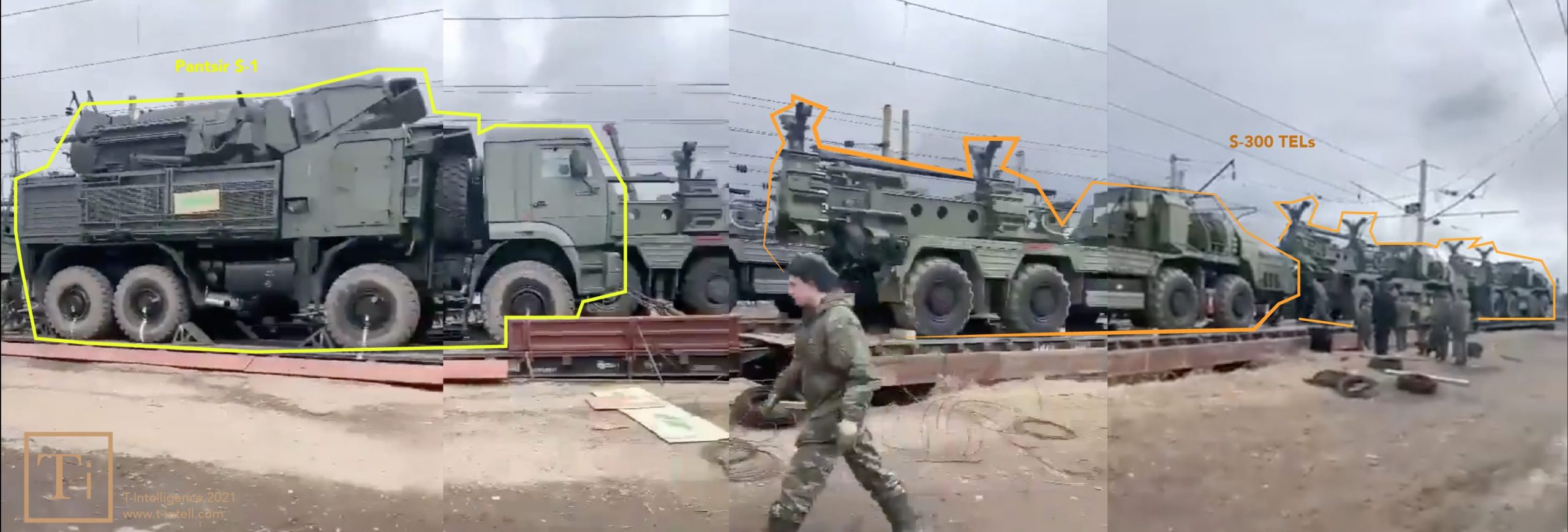
More military vehicles are now trying to obfuscate their origin by covering part of their number plates that indicate the unit’s military district, according to Conflict Intelligence Team (CITEAM).
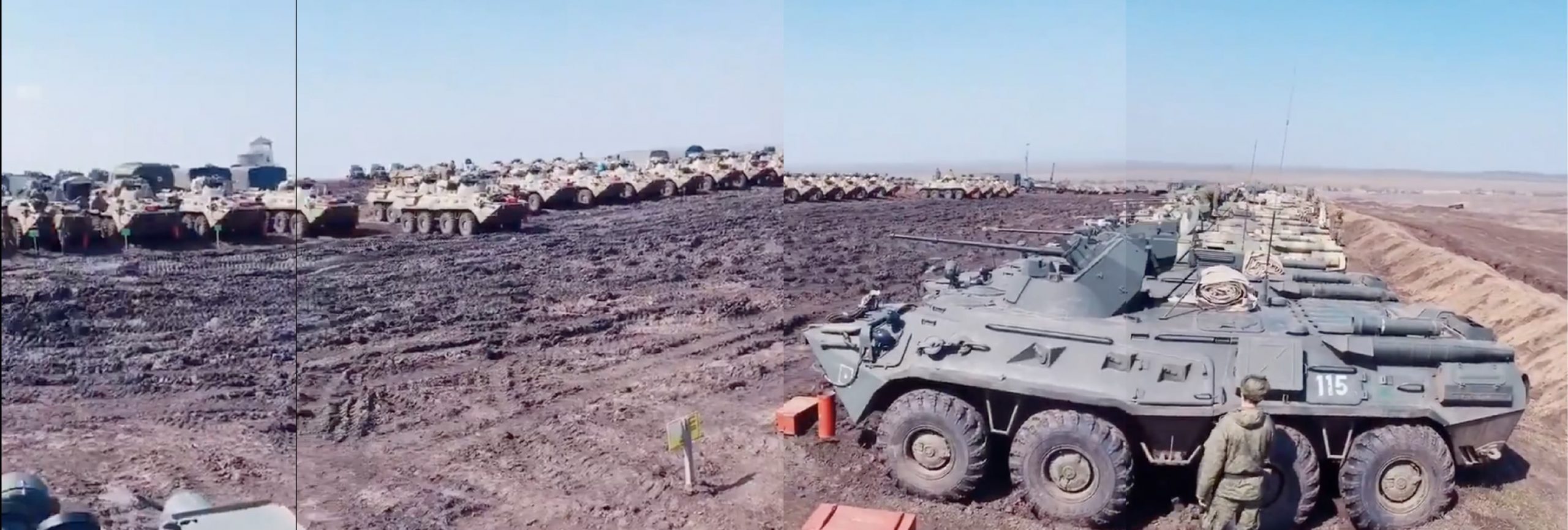
Troop movements were also spotted in the Central Military District (CMD). CITEAM specifically observed BMPs, MLRS, and other vehicles moving west from #Yurga and #Novosibirsk (Siberia) on railways. It is unusual for CMD units to deploy so far from “home” outside of strategic exercises.
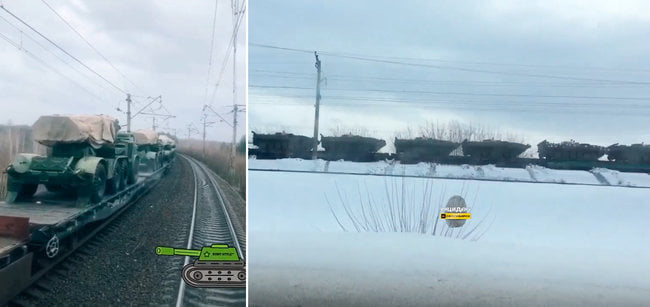
#NATO and especially the U.S. continue to monitor the situation in the region. As those who followed our stories know, RQ-4 Global Hawk drones and P-8A Poseidon aircraft have been constantly on station over the Black Sea, keeping an eye on Crimea and Krasnodar Krai.
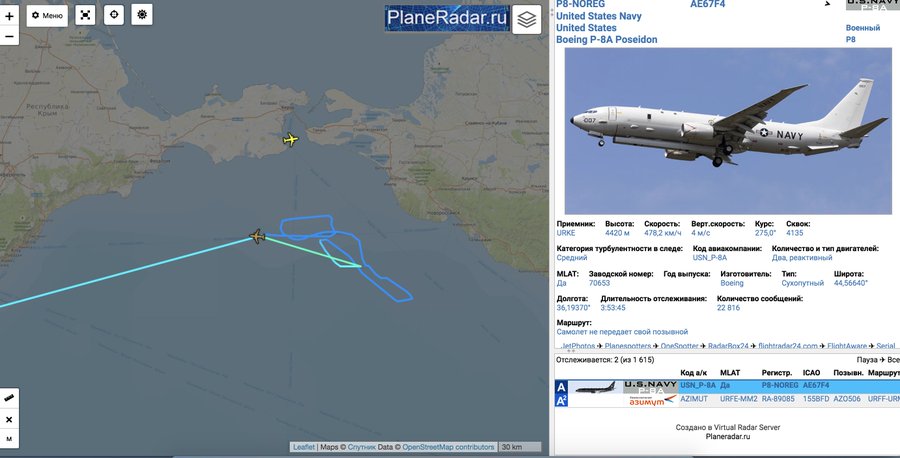
Despite multiple social media claims, large-scale fighting has not reignited in Donbas. However, some worrisome developments have occurred, such as a spike in ceasefire violations and the disappearance of seven multiple launch rocket systems (BM-21 Grad, 122mm) and five towed howitzers (2A65 Msta-B, 152mm) from a warehouse in Russian-controlled Luhansk. The OSCE monitoring mission noted that the heavy weapons were missing for the first time. (Daily Report 75/2021 – April 1 – pag.5)
Iata si relatarea publicatiei Stars & Stripes despre ridicarea nivelului de alerta al SUA & NATO :
U.S. European Command has raised its threat level over worries that Russia is massing forces around eastern Ukraine, where the Pentagon says tensions have escalated in recent weeks.
“We’re discussing our concerns about this increase in tensions and cease-fire violations and regional tensions with NATO allies,” Pentagon spokesman John Kirby told reporters Wednesday.
The situation in Ukraine prompted Joint Chiefs of Staff Chairman Gen. Mark Milley on the same day to connect with his counterparts in both Russia and Ukraine, in an attempt to de-escalate a situation that has prompted fears within Ukraine of a looming Russian offensive.
Gen. Tod Wolters in the past week raised EUCOM’s watch level for Ukraine from possible crisis to potential imminent crisis — the highest level, The New York Times reported Wednesday. EUCOM declined to comment on the threat level change, but said it is monitoring events in Ukraine carefully.
Kirby said changes in so-called “WATCHCON” levels express a “combatant commander’s concern about a potential threat and the ability to provide future warnings.”
“So by setting a WATCHCON, basically the commander is better able to identify and track the threat and alert decision makers to emerging concerns,” Kirby said, without discussing EUCOM’s current level.
Since Moscow’s 2014 military intervention in Ukraine, there have been steady clashes between Russian-backed separatists in the country’s east and government forces. On social media in recent weeks, scores of videos have shown Russian convoys of tanks and other combat vehicles apparently heading toward Ukraine.
Michael Kofman, a security analyst with expertise on Russia, said it isn’t clear what Moscow has planned.
“Regarding force movements around Ukraine. No strong evidence that an attack is imminent, but force movements are indicative that something is up outside of regular exercises, or normal troop rotation,” Kofman said in a Twitter post. “Russian intentions (are) unclear.”
Kirby did not offer an assessment on the apparent military buildup, but blamed Moscow for recent violations of a July 2020 cease-fire deal in Ukraine that resulted in the deaths of four Ukrainian soldiers last week.
Russia also has stepped up maneuvers beyond Ukraine in recent days.
On Monday, NATO fighter jets conducted 10 intercepts of Russian warplanes, stretching from the Arctic to southern Europe as the alliance countered what it called “an unusual peak” of flights. Allied aircraft shadowed Russian bombers and fighters over the North Atlantic, North Sea, Black Sea and Baltic Sea, NATO said.

